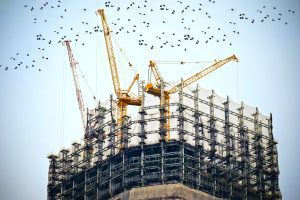
As the global community continues to grapple with the urgent need to address environmental, social, and governance (ESG) issues, standards and frameworks for sustainability reporting have become essential tools for businesses, investors, and regulators alike. The Sustainability and Accounting Standards Board (SASB) Standards are a set of 77 industry-specific standards, organised by sector, that identify the sustainability issues that are most relevant to an industry and their financial performance.
For each industry, these standards cover five broad areas of sustainability, including environmental, social capital, human capital, business model and innovation, and leadership and governance. They include disclosure topics with qualitative and quantitative accounting metrics, each with accompanying technical protocols that provide guidance on definitions, scope, accounting, compilation, and presentation. This ensures that metrics are compiled consistently to allow comparisons across companies. Activity metrics help to measure the scale of a company’s business, providing operational context and helping to normalise accounting metrics. To accompany each SASB standard, there is universal application guidance on how to report. They serve as a valuable resource for businesses and investors on what sustainability issues are likely to have a financial impact.
The home building and real estate sectors (listed in SASB under the infrastructure industry) play a pivotal role in shaping our communities and landscapes. One of the key challenges in the home building sector is adhering to environmental regulations and permitting processes, especially when working on greenfield sites. Home building often takes place on previously undeveloped land, leading to significant ecosystem disruptions during construction activities. These disruptions can harm local flora and fauna and violations of regulations can result in hefty fines, project delays, harm to a builder’s reputation, and make it difficult to obtain permits for future developments. Here are the areas that SASB helps to address within the home building sector:
1) Land use and ecological impact
- Number of homes/lots delivered on redevelopment sites
- Number of homes/lots delivered in regions with high baseline water stress
- Monetary losses as a result of legal proceedings associated with environmental legislation
- Discussion of process to integrate environmental considerations into site selection, site design and site development and construction
2) Workforce and health and safety
- Incident and fatality rates for direct and contracted employees
3) Design for resource efficiency
- Individual and average home energy ratings
- Percentage of water efficient fixtures
- Third party accreditation of green building standards (POE)
- Description of risks and opportunities related to incorporating resource efficiency into home design, and how benefits are communicated to customers
4) Community impacts of new developments
- Description of how proximity and access to infrastructure, services, and economic centres affect site selection and development decisions
- Number of lots and homes delivered on infill sites
- Number of homes delivered in compact developments and average density
5) Climate change adaption
- Number of lots located in 100-year flood zones
- Description of climate change risk exposure analysis, degree of systematic portfolio exposure, and strategies for mitigating risks
The key challenges for the real estate sector are energy and water consumption of homes. Buildings consume significant amounts of energy and water in their daily use. Entities that effectively manage asset energy and water efficiency, even if they bear no direct water costs, may realise reduced operating costs and regulatory exposure, as well as increased tenant demand, rental rates, and occupancy rates—all of which drive revenue and asset value appreciation. Here are some of the areas that SASB helps to address within the real estate sector:
1) Energy management
- Energy consumption data coverage as a percentage of total floor area, by property sector
- Total energy consumed by portfolio area with data coverage, percentage grid electricity, and percentage renewable
- Like-for-like percentage change in energy consumption for the portfolio area with data coverage
- Percentage of eligible portfolio that has an energy rating and is certified to ENERGY STAR
- Description of how building energy management considerations are integrated into property investment analysis and operational strategy
2) Water management
- Water withdrawal data coverage as a percentage of total floor area and floor area in regions with High or Extremely High Baseline Water Stress, by property sector
- Total water withdrawn by portfolio area with data coverage and percentage in regions with High or Extremely High Baseline Water Stress
- Like-for-like percentage change in water withdrawn for portfolio area with data coverage, by property sector
- Description of water management risks and discussion of strategies and practices to mitigate those risks
3) Management of tenant sustainability impacts
- Percentage of new leases that contain a cost recovery clause for resource efficiency related capital improvements and associated leased floor area
- Percentage of tenants that are separately metered or sub-metered for grid electricity consumption and water withdrawals
- Discussion of approach to measuring, incentivising, and improving sustainability impacts of tenants
4) Climate change adaption
- Area of properties located in 100-year flood zones, by property sector
- Description of climate change risk exposure analysis, degree of systematic portfolio exposure, and strategies for mitigating risks
In an era when environmental and social concerns are at the forefront of business strategies, the SASB Standards offer a helpful framework for transparent and accountable sustainability reporting. By providing industry-specific guidance, disclosure topics, and metrics, these standards empower entities to communicate their sustainability performance effectively, fostering trust among investors, stakeholders, and the public. As sustainability reporting continues to evolve, these standards have the potential to play a pivotal role in shaping the way we measure and manage our environmental and social . At SHIFT, we believe that these standards will need to evolve to include embodied carbon of materials used in construction and maintenance, as well as how the built environment can contribute to net zero transport and sustainable waste management.
If you would like to establish the environmental impacts of your building portfolio, please get in touch with us here at SHIFT.
Photo by Danist Soh on Unsplash
